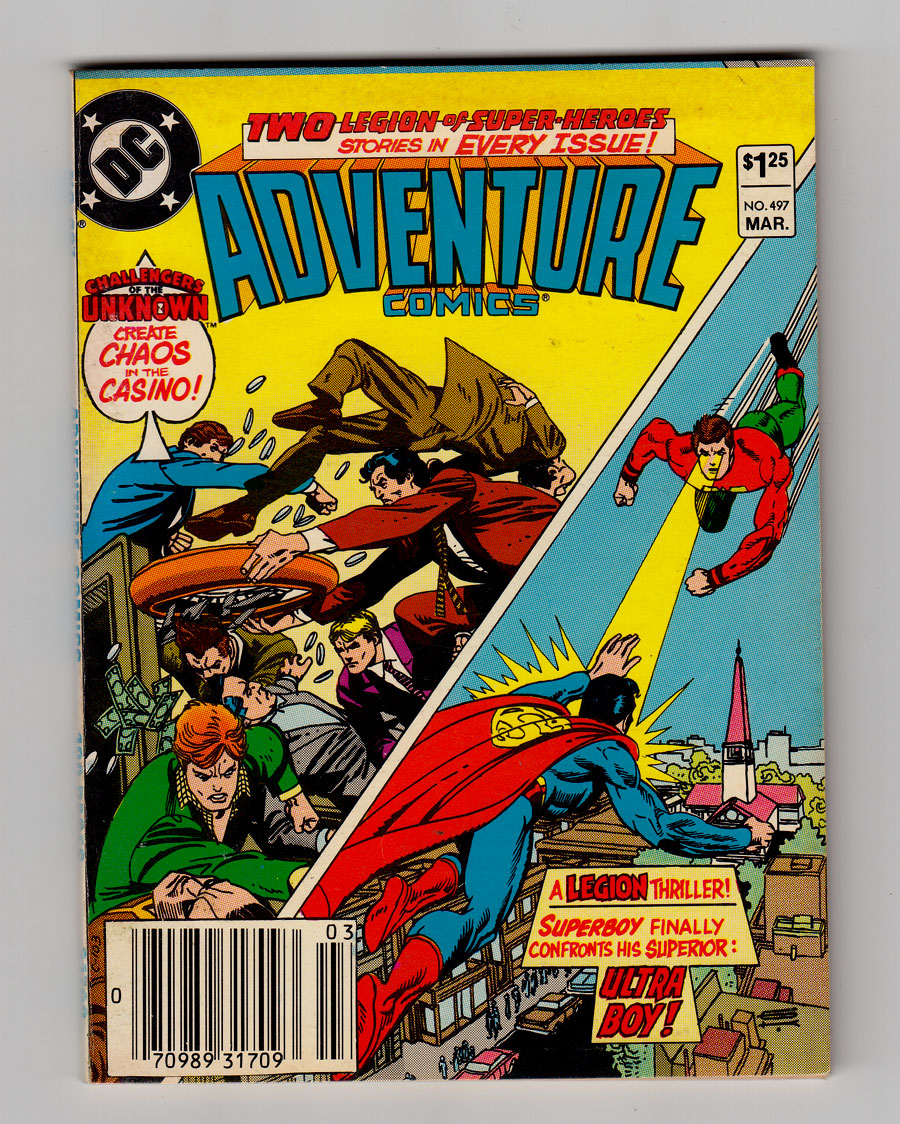ADVENTURE COMICS (1938-83) #497
NM-: 9.2

(Stock Image)

YES
Accepting Offers
--
Offers
DESCRIPTION
white pgs
digest-sized; rare!; Kane cvr; Toth-a
Artists Information
Toth began working in comics during the Golden Age at DC where he illustrated Green Lantern and other titles, after returning from military service he began working at Hanna-Barbera on cartoons like Space Ghost and the Herculoids, while continuing to work on comics, particularly in the war genre.
Swan was a house artist at DC working on titles like Tommy Tomorrow, he began gravitating towards Superman and his related books, Superboy, World's Finest and Jimmy Olsen, he would eventually leave DC thanks to his personality issue with Editor In Chief Mort Weisinger. He would eventually return and go on to be the artist that defined the look of Superman in the Silver Age, eventually becoming the editor of the title, but after thirty years of keeping up standards of all things Superman, Swan was given the boot in favor of John Byrne's Superman reboot, Swan's comic work began to taper off after this dismissal and he eventually retired, but will forever be recognized as the Silver Age Superman's finest artist.
Gil Kane was a Latvian-born American comics artist whose career spanned the 1940s to the 1990s and virtually every major comics company and character. Kane co-created the modern-day versions of the superheroes Green Lantern and the Atom for DC Comics, and co-created Iron Fist with Roy Thomas for Marvel Comics. He was involved in such major storylines as that of The Amazing Spider-Man #96–98, which, at the behest of the U.S. Department of Health, Education, and Welfare, bucked the then-prevalent Comics Code Authority to depict drug abuse, and ultimately spurred an update of the Code. Kane additionally pioneered an early graphic novel prototype, His Name Is... Savage, in 1968, and a seminal graphic novel, Blackmark, in 1971. In 1997, he was inducted into both the Will Eisner Comic Book Hall of Fame and the Harvey Award Jack Kirby Hall of Fame.
digest-sized; rare!; Kane cvr; Toth-a
Artists Information
Toth began working in comics during the Golden Age at DC where he illustrated Green Lantern and other titles, after returning from military service he began working at Hanna-Barbera on cartoons like Space Ghost and the Herculoids, while continuing to work on comics, particularly in the war genre.
Swan was a house artist at DC working on titles like Tommy Tomorrow, he began gravitating towards Superman and his related books, Superboy, World's Finest and Jimmy Olsen, he would eventually leave DC thanks to his personality issue with Editor In Chief Mort Weisinger. He would eventually return and go on to be the artist that defined the look of Superman in the Silver Age, eventually becoming the editor of the title, but after thirty years of keeping up standards of all things Superman, Swan was given the boot in favor of John Byrne's Superman reboot, Swan's comic work began to taper off after this dismissal and he eventually retired, but will forever be recognized as the Silver Age Superman's finest artist.
Gil Kane was a Latvian-born American comics artist whose career spanned the 1940s to the 1990s and virtually every major comics company and character. Kane co-created the modern-day versions of the superheroes Green Lantern and the Atom for DC Comics, and co-created Iron Fist with Roy Thomas for Marvel Comics. He was involved in such major storylines as that of The Amazing Spider-Man #96–98, which, at the behest of the U.S. Department of Health, Education, and Welfare, bucked the then-prevalent Comics Code Authority to depict drug abuse, and ultimately spurred an update of the Code. Kane additionally pioneered an early graphic novel prototype, His Name Is... Savage, in 1968, and a seminal graphic novel, Blackmark, in 1971. In 1997, he was inducted into both the Will Eisner Comic Book Hall of Fame and the Harvey Award Jack Kirby Hall of Fame.